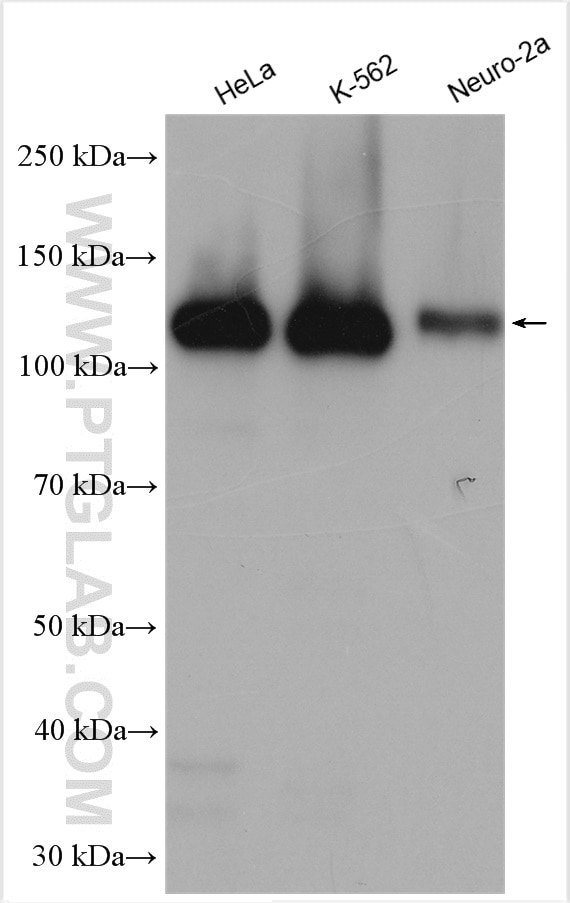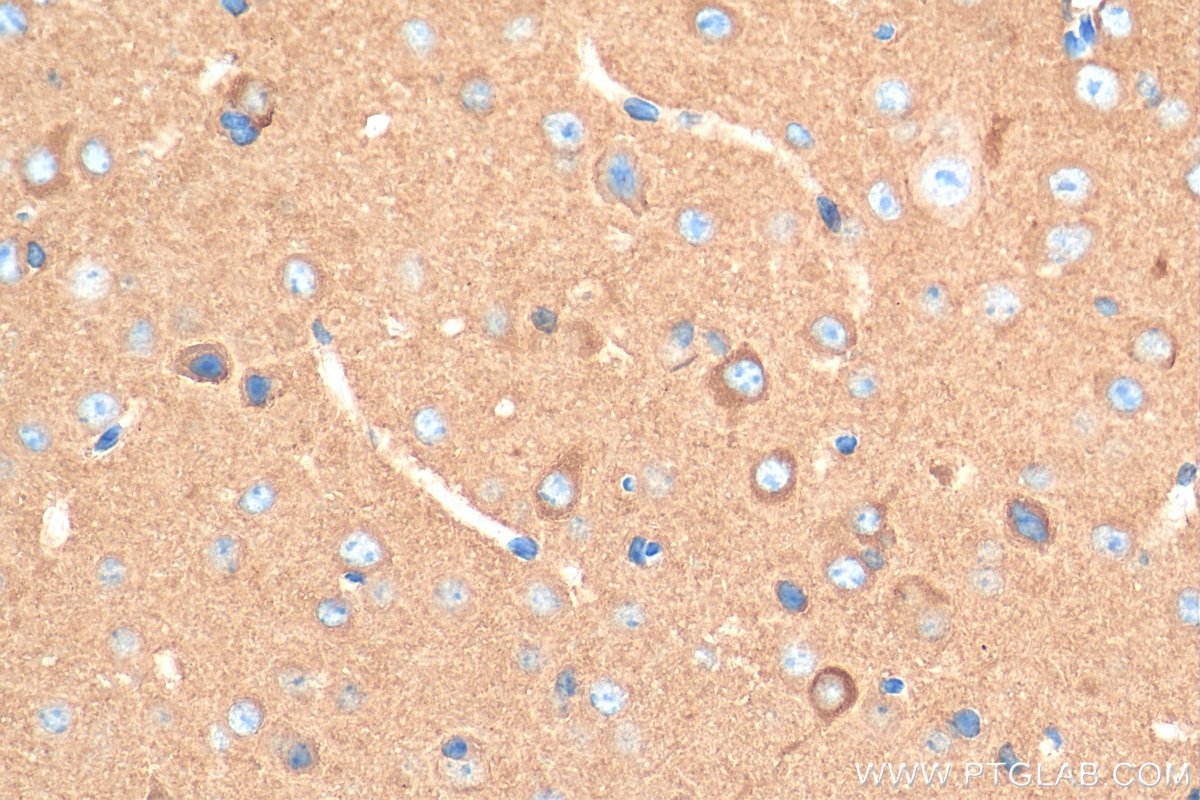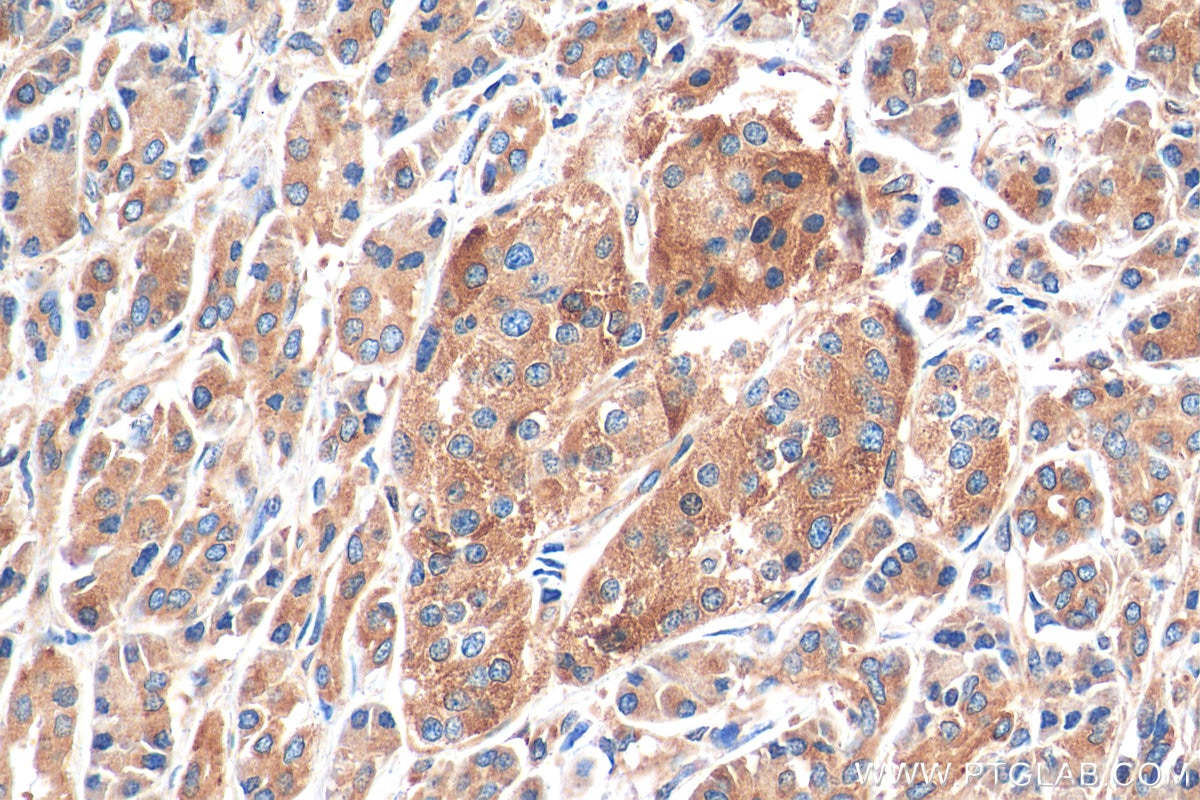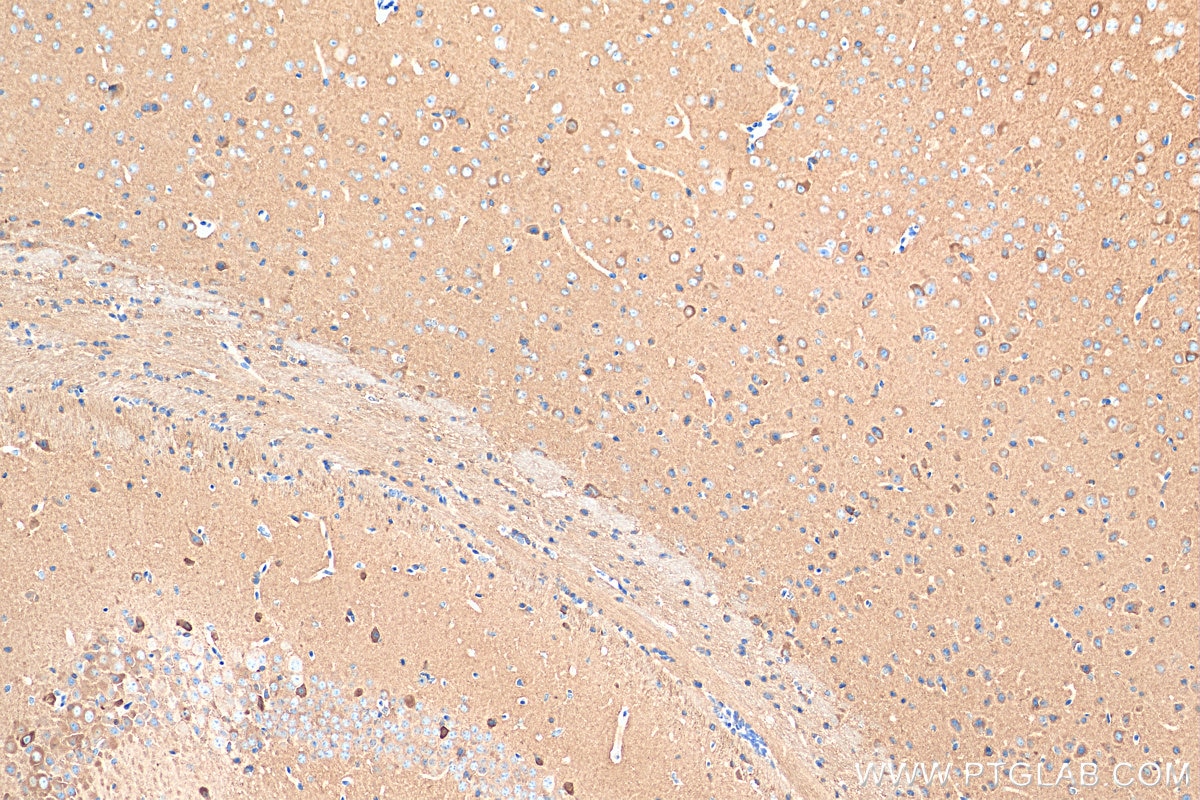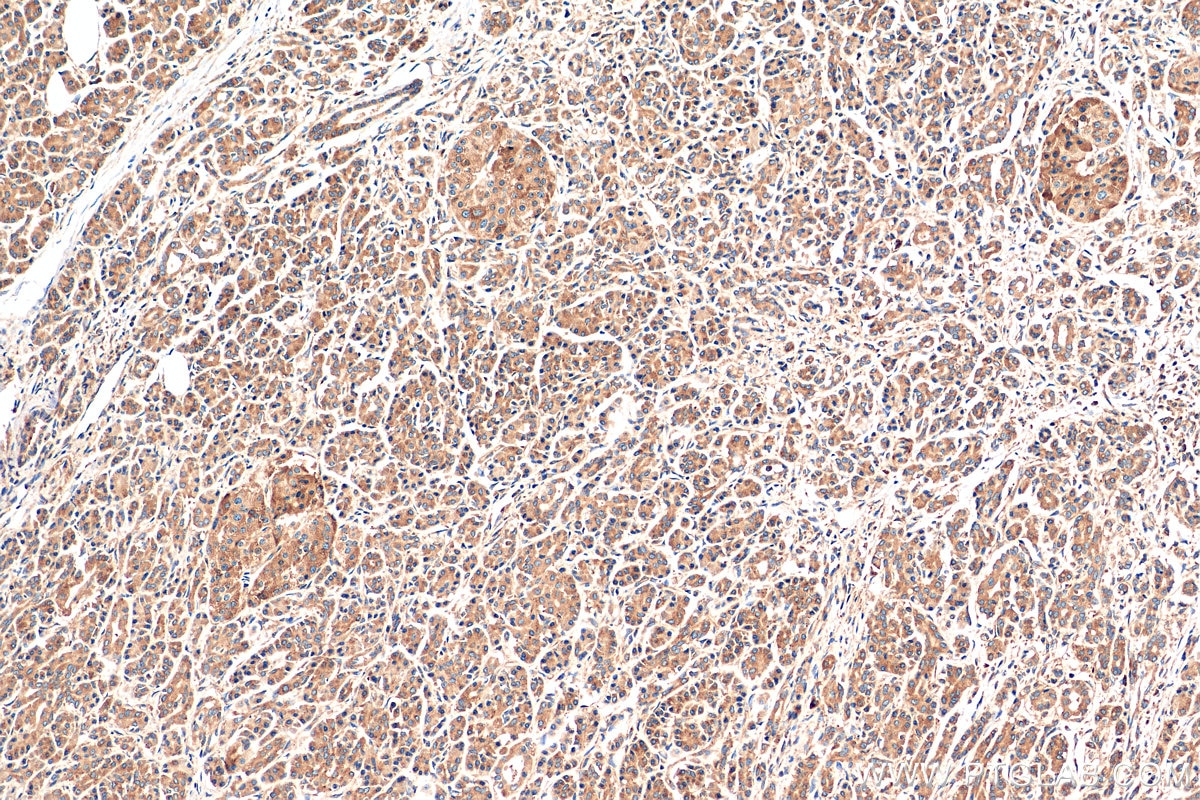Anticorps Polyclonal de lapin anti-OXR1
OXR1 Polyclonal Antibody for WB, IHC, ELISA
Hôte / Isotype
Lapin / IgG
Réactivité testée
Humain, souris et plus (1)
Applications
WB, IHC, IF, IP, ELISA
Conjugaison
Non conjugué
N° de cat : 13514-1-AP
Synonymes
Galerie de données de validation
Applications testées
| Résultats positifs en WB | cellules HeLa, cellules K-562, cellules Neuro-2a |
| Résultats positifs en IHC | tissu de cancer du pancréas humain, tissu cérébral de souris il est suggéré de démasquer l'antigène avec un tampon de TE buffer pH 9.0; (*) À défaut, 'le démasquage de l'antigène peut être 'effectué avec un tampon citrate pH 6,0. |
Dilution recommandée
| Application | Dilution |
|---|---|
| Western Blot (WB) | WB : 1:2000-1:16000 |
| Immunohistochimie (IHC) | IHC : 1:50-1:500 |
| It is recommended that this reagent should be titrated in each testing system to obtain optimal results. | |
| Sample-dependent, check data in validation data gallery | |
Applications publiées
| KD/KO | See 2 publications below |
| WB | See 8 publications below |
| IHC | See 1 publications below |
| IF | See 2 publications below |
| IP | See 1 publications below |
Informations sur le produit
13514-1-AP cible OXR1 dans les applications de WB, IHC, IF, IP, ELISA et montre une réactivité avec des échantillons Humain, souris
| Réactivité | Humain, souris |
| Réactivité citée | rat, Humain, souris |
| Hôte / Isotype | Lapin / IgG |
| Clonalité | Polyclonal |
| Type | Anticorps |
| Immunogène | OXR1 Protéine recombinante Ag4439 |
| Nom complet | oxidation resistance 1 |
| Masse moléculaire calculée | 758 aa, 85 kDa |
| Poids moléculaire observé | 120-140 kDa |
| Numéro d’acquisition GenBank | BC032710 |
| Symbole du gène | OXR1 |
| Identification du gène (NCBI) | 55074 |
| Conjugaison | Non conjugué |
| Forme | Liquide |
| Méthode de purification | Purification par affinité contre l'antigène |
| Tampon de stockage | PBS with 0.02% sodium azide and 50% glycerol |
| Conditions de stockage | Stocker à -20°C. Stable pendant un an après l'expédition. L'aliquotage n'est pas nécessaire pour le stockage à -20oC Les 20ul contiennent 0,1% de BSA. |
Informations générales
Oxidation resistance protein 1 (OXR1) belongs to the OXR1 family. The major function of OXR1 is to control the expression of genes that alleviate oxidative stress by increasing cellular resistance to reactive oxygen species (ROS) and the stress these molecules cause the cell. OXR1's ability to reduce oxidative stress and neurodegeneration in multiple diseases strongly suggests that it can be an effective therapeutic target (PMID: 33384581).Biochemical experiments show that OXR1 inhibits V1-ATPase and causes disassembly of the holoenzyme, suggesting that OXR1 plays a direct role in V-ATPase regulation (PMID: 34918374). OXR1 has 8 isoforms with the molecular mass of 25, 28, 34, 56, 94, 95 and 98 kDa. Sometimes higher molecular weight around 120-140 kDa can also be observed, which may be a modified variant of OXR1.
Protocole
| Product Specific Protocols | |
|---|---|
| WB protocol for OXR1 antibody 13514-1-AP | Download protocol |
| IHC protocol for OXR1 antibody 13514-1-AP | Download protocol |
| Standard Protocols | |
|---|---|
| Click here to view our Standard Protocols |
Publications
| Species | Application | Title |
|---|---|---|
Cell Mol Life Sci The Ncoa7 locus regulates V-ATPase formation and function, neurodevelopment and behaviour. | ||
J Inflamm Res Orexin-A Attenuates Inflammatory Responses in Lipopolysaccharide-Induced Neural Stem Cells by Regulating NF-KB and Phosphorylation of MAPK/P38/Erk Pathways. | ||
Front Mol Biosci 6-Shogaol Inhibits Oxidative Stress-Induced Rat Vascular Smooth Muscle Cell Apoptosis by Regulating OXR1-p53 Axis. | ||
Brain Res Bull Aerobic training associated with an active lifestyle exerts a protective effect against oxidative damage in hypothalamus and liver: The involvement of energy metabolism. | ||
Neurosci Bull MicroRNA-365 Knockdown Prevents Ischemic Neuronal Injury by Activating Oxidation Resistance 1-Mediated Antioxidant Signals. | ||
Redox Biol Iridium metal complex targeting oxidation resistance 1 protein attenuates spinal cord injury by inhibiting oxidative stress-associated reactive oxygen species |
